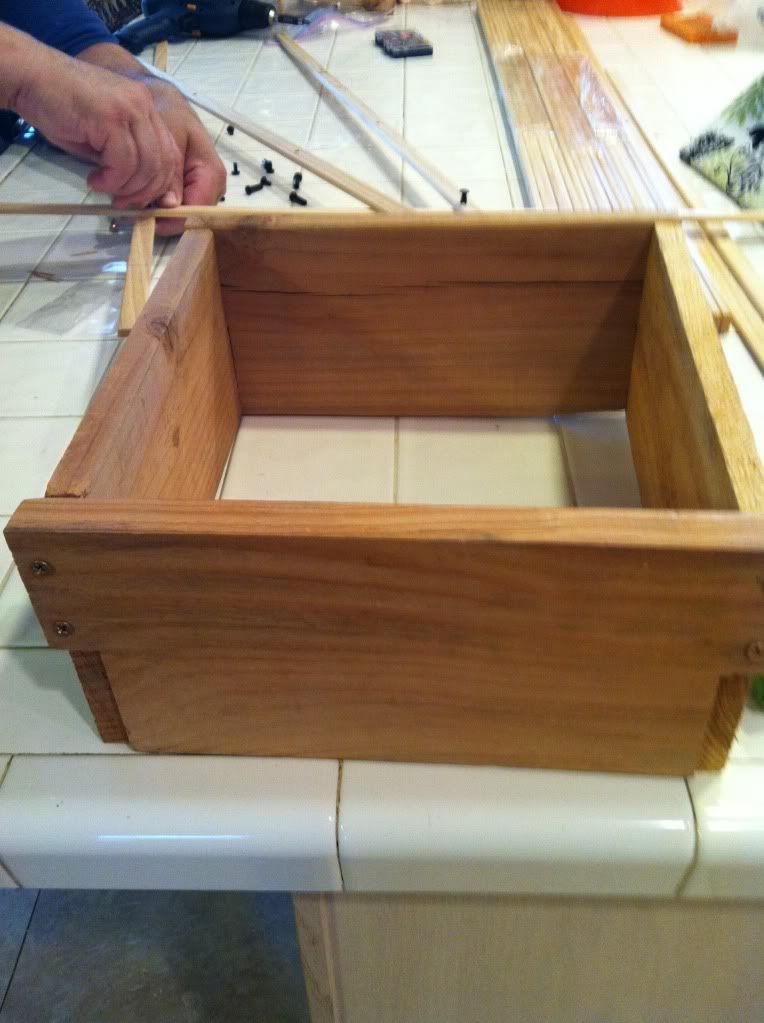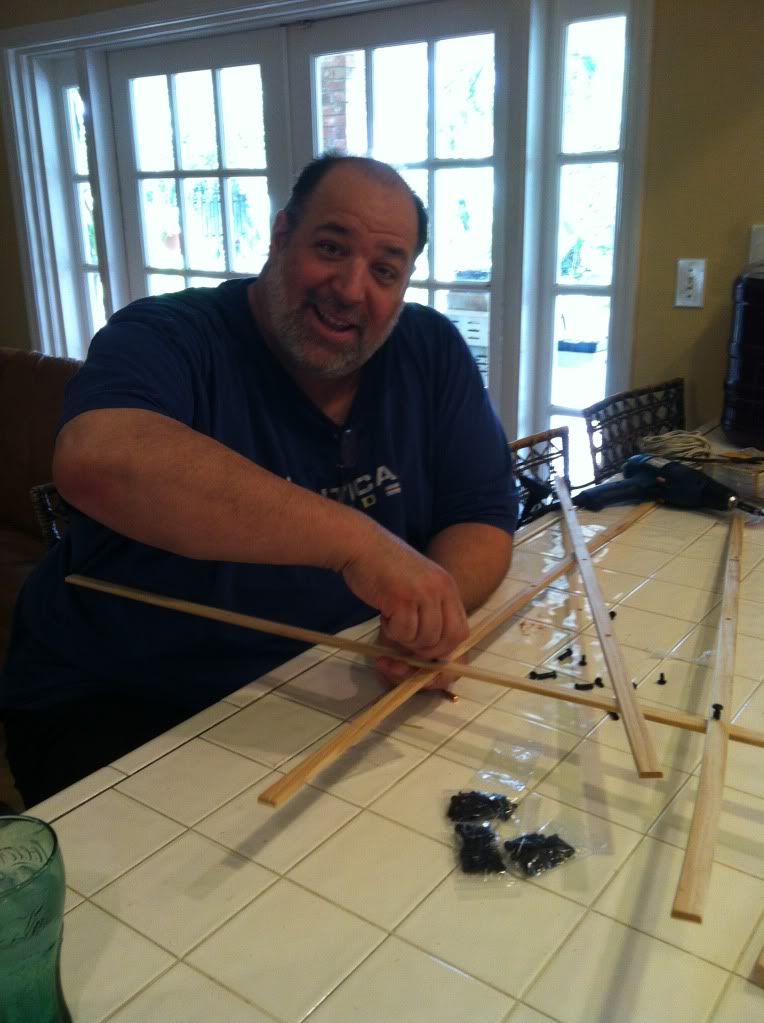I have recently started exercising again and have been watching my diet very closely. I think they call that a life-style modification, as opposed to diet. Well Cherry tomatoes have become my new best friend. They are so sweet that they actually satisfy my sweet tooth. Crazy right!
I put together the carrot box that will sit on top of my grid. This will make the depth of my soil deeper for the carrots. I also put together my grids that will sit on top of each 4x4 garden. My husband Dave was a huge help as he helped me with the boxes, mixing the dirt and putting together the grids. I couldn’t have done this project without him!
 |  |
I have been mixing the soil (Mel’s Mix) which isn’t difficult but time consuming. The soil is probably the most important aspect to any garden. It really will make or break how well your plants thrive. I also mulched around the boxes and planted some Sunflower seeds to add some color to the garden, distract from the ugly wall of my house, and hopefully attract some pollinators to my vegetable garden. I wish I was an artist because I would paint some beautiful Sunflowers on the wall of the house.
Here is a video I think really explains Square Foot Gardening (SFG). It is very concise, but says it all!
I found an awesome website while I was watching videos on You Tube about Square Foot Gardening. It can be found at www.growveg.com. It is a great program to actually plan your garden; they even have an “app“for your iphone. There are tutorial videos so you can figure out how to work the website. It really is very user friendly. Here is my plan below. The nice thing about the website is that you are able to go back into your plan and make adjustments, which I have done several times. You are able to plot where you want each plant; you can even keep notes on each plant as far as variety, and specific growing instructions.
http://www.growveg.com/garden-plan.aspx?p=316616
So how did I decide where to plant each plant? Well first of all I considered spacing, which is what Square Foot Gardening is all about. I wanted to give the taller plants and vineing plants more room. It says to plant tall plants on the North side of your garden as to not shade your smaller plants. I actually tried to keep most of my taller plants in the back of the garden. I plan to build trellises to support these taller plants on the back of each box. Another important consideration in plant placement is Companion Planting. Companion Planting is planting plants together that may compliment or help each other. For example have you ever heard of the “Three Sisters?” The Three Sisters is a Native American tradition. After all the American Indians were our first gardeners. The Native Americans believed that corn, beans, and squash are the three inseparable sisters who can thrive only when raised together. Corn provides a natural pole for the beans vines to climb, while the bean vines help shore up the corn stalks and leave behind nitrogen for the soil. Spreading squash shades the bed from weeds and keeps the soil moist, and all three plants create rich compost after the harvest. Corn, beans, and squash not only complement one another in the soil, they also complement one another nutritionally. Corn provides carbohydrates; beans are rich in protein, and squash offer vitamins from the fruit and nutrient-rich oil from the seeds. Native Americans shared their Three Sisters planting system with early European settlers and taught them to recognize the signs that it is time to plant. Speaking of the Indians I received several Seminole squash seeds from Richard Campbell the curator of Fairchild Botanical Gardens. These seeds are actually from the Seminole Indians. The Indians used to girdle the Oak trees which would kill them and allow the squash to utilize the tree as a trellis and allow the squash to grow up the oak tree. There is an excellent article in the magazine “Edible Miami” written by Richard Campbell about the history of the Seminole Squash. I was very pleased to receive these seeds, and planted them next to my fence line so they could use the fence as a trellis.
So in planning my plant placement I will be planting my corn next to my squash. I didn’t choose to grow beans but I am sure that the corn and squash will be good together. I tried to plant aromatic plants in the same bed as the tomatoes to deter pests. There is a great book by Louise Riotte “Carrots Love Tomatoes: Secrets of Companion Planting for Successful Gardening.” Information about Companion Planting is also on the garden planner www.growveg.com.
I finally have all the dirt in all four boxes and the grids in place. I am waiting for my drip irrigation system to arrive. This will make watering so much easier and hopefully make my plants thrive and keep them free from pests. I look forward to planting in the next week or so, as soon as I have the drip irrigation system in place.



No comments:
Post a Comment